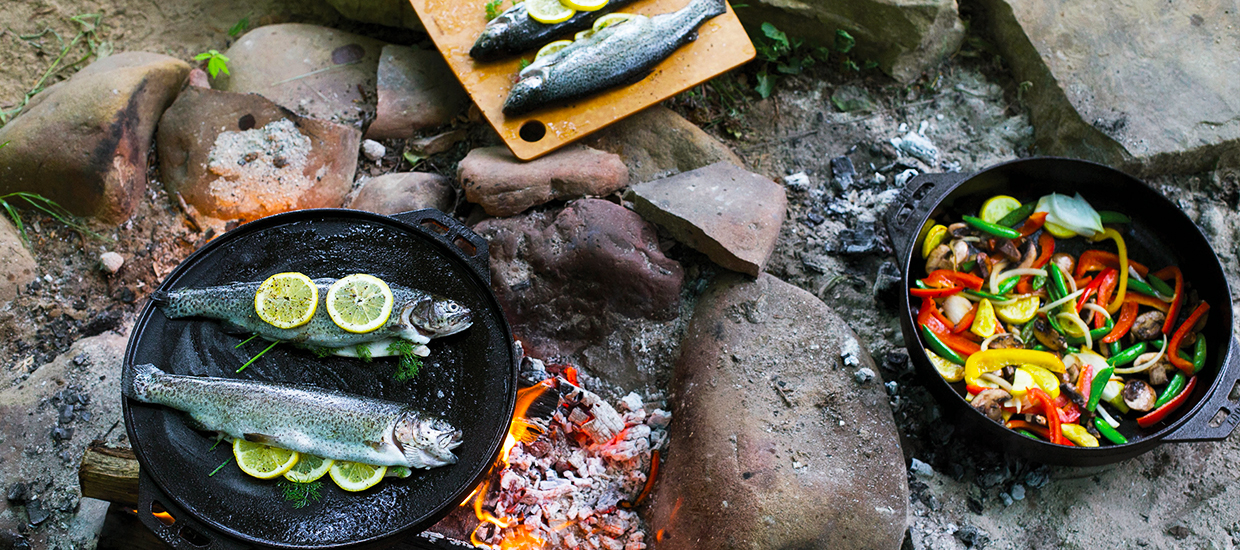After The Catch

Once you’ve mastered the waters and collected your loot, the fun (and delicious) part begins! It’s time to prepare your hard-earned fish for a feast.
Handling Your Fish Safely from Storage to Stove
When it comes to handling your catch, take proper precautions to keep your fish fresh and safe for eating.
It’s fine to keep your fish live on stringers or in live wells, so long as they have enough water and their mobility isn’t too restricted. When fileting your fish, you’ll want to do so out of the way of direct sunlight, cleaning your knife frequently between cuts to prevent tracing bacteria from the
skin. After your processing is complete, wash your utensils and cutting board with warm, soapy water, and keep any raw fish in separate sealable plastic bags to prevent cross-contamination.

- Rinse the fish under cold and clean water to remove bacteria, blood, and other enzymes.
- Use a clean filleting fish knife on a clean cutting board.
- Cut the fish's throat and remove gills and entrails.
- Remove skin and any fatty deposits that can gather in fatty areas of the fish.
- Remove scales by scraping the dull edge of a knife from tail to head.
- Remove the head by slicing just above the collar bone.
- Take out the fins by slicing the flesh along each side and pulling slightly.
Tip: Avoid simply trimming the fins as this will leave bones in the base of the fin.
- Wipe your fish clean with a cloth or paper towel without wiping it completely dry (it should be moist, not wet).
- Wrap the fish in a sealed plastic storage bag and keep on ice/snow.
Tip: The ideal temperature to prevent bacteria growth is between 1.5 - 4.5 Celsius.



